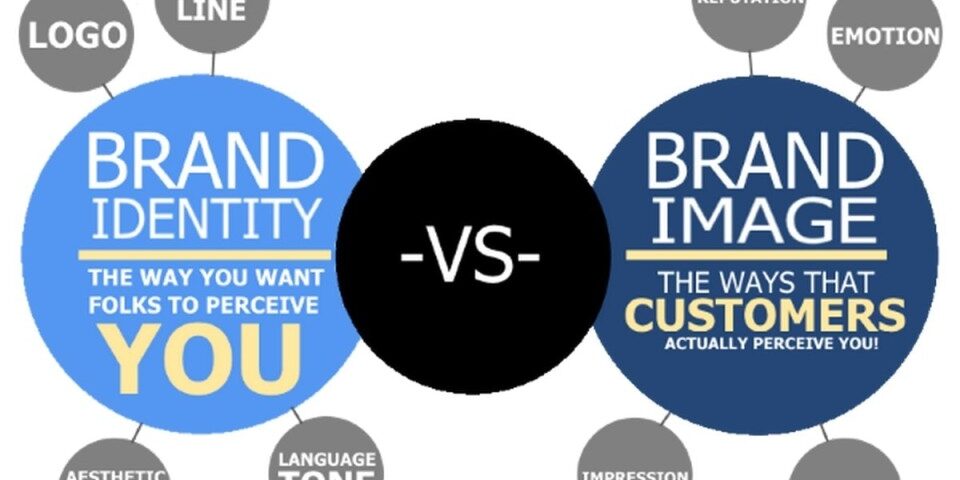- Have any questions?
- +91 96020 93137
- +91 93525 62080
- info@worldseoservices.com
Brand Identity vs. Brand Image: What’s the Difference and Why It’s Important

The Power of a Strong Brand: Why It Matters for Your Business Success
December 27, 2024
How to Build a Memorable Brand: Key Elements of Branding
December 28, 2024Clarify these concepts and guide readers on aligning their business identity with customer perception.
In the world of marketing, the terms “brand identity” and “brand image” are often used interchangeably, but they represent two distinct aspects of branding. For businesses looking to establish a strong presence, understanding the difference and importance of these concepts is critical. At World SEO Services, we help businesses align their brand identity and image to create a cohesive, trustworthy reputation that resonates with their audience.
This article delves into the distinctions between brand identity and brand image, their significance, and strategies for maintaining consistency between the two.

What Is Brand Identity?
Brand identity refers to the visual, emotional, and strategic elements a business uses to represent itself. It’s what the business creates to communicate its values, mission, and personality to the world.
Key Components of Brand Identity:
- Logo: The visual symbol that represents the brand.
- Color Palette: The specific colors associated with the brand.
- Typography: The fonts and typefaces used in branding materials.
- Voice and Tone: The way a brand communicates, whether formal, casual, or playful.
- Core Values: The principles that guide the brand’s actions.
- Mission and Vision Statements: What the brand stands for and its long-term goals.
Brand identity is proactive—it’s about crafting how the business wants to be perceived by its target audience.

What Is Brand Image?
Brand image, on the other hand, is the perception customers and the public have of the brand. Unlike identity, which is controlled by the business, the image is shaped by the audience’s experiences, emotions, and interactions with the brand.
Factors Influencing Brand Image:
- Customer Experiences: Interactions with products, services, and customer support.
- Public Perception: How the brand is viewed in the media and by influencers.
- Social Proof: Reviews, testimonials, and recommendations from other customers.
- Consistency: Whether the brand delivers on its promises.
While brand identity is what you create, brand image is what your audience perceives—it’s reactive and built over time.

The Difference Between Brand Identity and Brand Image
The primary distinction between brand identity and brand image lies in control and perspective.
| Aspect | Brand Identity | Brand Image |
| Definition | What a business creates to represent itself. | The perception of the brand by its audience. |
| Control | Fully controlled by the business. | Largely influenced by audience experiences. |
| Components | Logo, design, messaging, values. | Customer perception, reviews, word-of-mouth. |
| Perspective | Internal (from the business’s point of view). | External (from the audience’s point of view). |
Both are crucial for building a successful brand, but they must align to ensure consistency and trustworthiness.
Why the Difference and Importance Matter
1. Ensuring Consistency
A misalignment between brand identity and image can confuse customers and weaken your credibility. For example, if a brand positions itself as luxurious but delivers subpar products, its image will contradict its identity.
2. Building Trust
When your brand identity matches your audience’s perception, it creates trust. Customers are more likely to remain loyal when a brand consistently delivers on its promises.
3. Enhancing Marketing Efforts
A clear brand identity paired with a positive brand image makes marketing campaigns more effective. It ensures that messaging resonates with the target audience.
4. Driving Customer Loyalty
Consistency between identity and image fosters a sense of reliability, encouraging repeat business and long-term relationships.
How to Align Brand Identity and Brand Image
1. Understand Your Target Audience
Conduct market research to learn what your audience values, expects, and perceives. Tailor your brand identity to align with these insights.
2. Deliver on Promises
Consistency in delivering quality products and services ensures that your brand image reflects your identity.
3. Monitor Customer Feedback
Regularly assess reviews, surveys, and social media comments to understand how your brand is perceived.
4. Communicate Effectively
Maintain a consistent tone and messaging across all platforms, from advertisements to customer interactions.
5. Adapt When Necessary
If there’s a significant gap between your brand identity and image, be prepared to adapt your strategy to bridge the divide.
Examples of Successful Branding
Apple
- Brand Identity: Innovation, simplicity, premium quality.
- Brand Image: Trusted leader in technology and design.
Apple’s consistency in product quality and messaging ensures alignment between identity and image.
Coca-Cola
- Brand Identity: Happiness, refreshment, togetherness.
- Brand Image: A timeless, beloved brand associated with positive experiences.
Coca-Cola’s marketing campaigns consistently evoke emotions that align with its identity.
Tesla
- Brand Identity: Sustainability, innovation, luxury.
- Brand Image: A pioneering leader in electric vehicles and clean energy.
Tesla’s commitment to its mission reinforces its brand image as an industry innovator.

Common Mistakes to Avoid
- Inconsistency: Mismatched messaging across platforms damages credibility.
- Overpromising: Setting unrealistic expectations leads to disappointment and a negative brand image.
- Neglecting Feedback: Ignoring customer opinions can result in a misaligned brand image.
Investing in Your Brand
At World SEO Services, we understand the difference and importance of brand identity and brand image. Our expert team helps businesses:
- Develop compelling brand identities.
- Monitor and manage public perception.
- Align identity and image for a cohesive and trustworthy presence.


